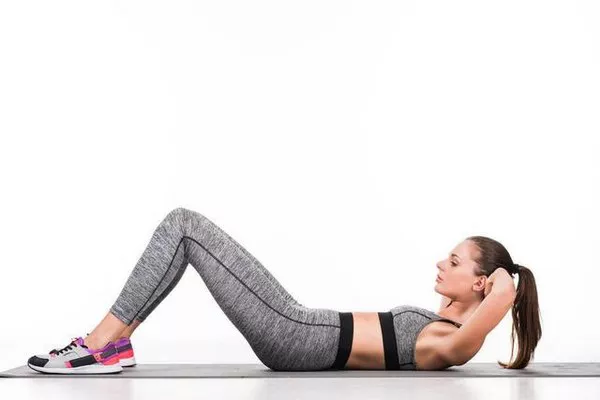Hot yoga, also known as Bikram yoga, is a popular form of exercise that involves performing a series of yoga poses and breathing exercises in a heated room. The high temperature is designed to help you sweat out toxins and improve your flexibility. But just how hot is hot yoga? In this article, we’ll explore the temperature range typically used for hot yoga and what you can expect from practicing in a heated room.
What Temperature is Hot Yoga?
Hot yoga studios typically maintain a temperature range of 95-105 degrees Fahrenheit (35-40 degrees Celsius) with a humidity level of 40-60%. The specific temperature and humidity levels may vary depending on the studio and the type of hot yoga being practiced. For example, some studios may offer hotter classes such as Inferno Hot Pilates or Power Vinyasa Flow, which can reach temperatures up to 110 degrees Fahrenheit (43 degrees Celsius).
The heat in a hot yoga class serves several purposes. It warms up your muscles and joints, making them more pliable and flexible. It also helps to increase blood flow and circulation, which can aid in detoxification and promote healing. Additionally, the high temperature can create a meditative environment by promoting focus and concentration, helping you to stay present in the moment and clear your mind.
What To Expect From Practicing in a Heated Room
If you’re new to hot yoga or have never practiced in a heated environment before, it’s important to know what to expect. Here are some things you may experience during a hot yoga class:
Profuse Sweating
One of the most noticeable effects of practicing hot yoga is sweating. You’ll likely sweat much more than you would in a typical yoga class. This is because the heat raises your body temperature and triggers your sweat glands to produce more sweat. Sweating is a natural way for your body to regulate its temperature and release toxins, so don’t be alarmed if you sweat a lot during class.
Increased Heart Rate
The heat in a hot yoga class can cause your heart rate to increase, especially during more vigorous sequences or poses. This is because your body is working harder to cool itself down and maintain a safe internal temperature. You may need to take breaks or modify poses to avoid overexertion.
Difficulty Breathing
Breathing can be challenging in a hot yoga class due to the humidity levels and increased respiratory effort required to regulate your body temperature. Try to focus on deep, controlled breathing throughout the practice, matching your breath to each movement to help regulate your body temperature and keep you calm.
Intense Sensations
Practicing hot yoga can create intense physical sensations such as burning, tingling, or discomfort in certain areas of your body. This is normal and usually dissipates as your body becomes more acclimated to the heat. If you experience any pain or discomfort, take a break and modify the pose as needed.
Improved Flexibility
The heat in a hot yoga class can help to increase your range of motion and improve your flexibility. Your muscles and joints are more pliable when warmed up, allowing you to deepen your stretches and access poses that may have been difficult for you before.
Tips for Practicing Hot Yoga Safely
Practicing hot yoga can be a great way to challenge your body, but it’s important to do so safely. Here are some tips for practicing hot yoga:
Hydrate Properly
It’s crucial to hydrate properly before, during, and after class to replenish fluids lost through sweating. Drink water or electrolyte-rich beverages such as coconut water or sports drinks to support your body’s recovery process.
Dress Appropriately
Wear lightweight, breathable clothing that will wick away sweat and allow your skin to breathe. Avoid wearing anything too tight or restrictive, as this can limit your range of motion and cause discomfort during your practice.
Listen to Your Body
Pay attention to any sensations or discomfort in your body and take breaks as needed. Hot yoga can be intense, so it’s important to pace yourself and not push yourself beyond your limits.
Practice Proper Breathing
Focus on deep, controlled breathing throughout the practice, matching your breath to each movement to help regulate your body temperature and keep you calm.
Modify Poses as Needed
If a pose is too challenging or uncomfortable, modify it or take a break. Remember that this is your practice, and it’s okay to make adjustments to suit your needs.
In conclusion
Hot yoga typically involves practicing in a heated room with temperatures ranging from 95-105 degrees Fahrenheit (35-40 degrees Celsius) and a humidity level of 40-60%. Practicing in a heated environment can increase sweating, heart rate, and flexibility, but it’s important to practice safely by hydrating properly, dressing appropriately, listening to your body, practicing proper breathing, and modifying poses as needed. By following these tips, you can enjoy the many benefits of hot yoga while minimizing the risks of injury or overheating. Remember that hot yoga isn’t for everyone, and if you have any health concerns or medical conditions, it’s important to talk to your doctor before trying a hot yoga class.
With proper preparation, hydration, and awareness of your body, hot yoga can be an invigorating and transformative practice. Whether you’re looking to improve your flexibility, detoxify your body, or simply enjoy a challenging workout, hot yoga offers something for everyone. So why not try a class today and experience the heat for yourself?
Related topics:


